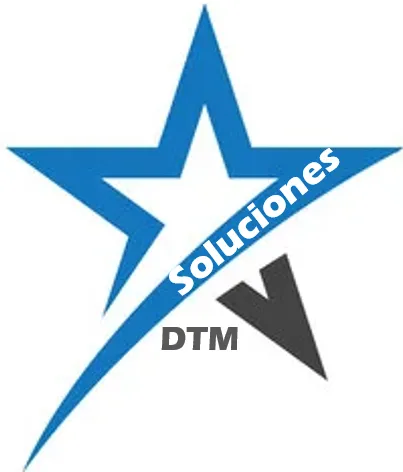This section builds on chapters one and two and explains how a company can identify and disclose material information about the sustainability-related risks and opportunities it has identified. In short, it depends on the specific facts and circumstances surrounding the incidents in question. Among other factors, an affected company “should consider whether any of those incidents were related, and if so, determine whether those related incidents, collectively, were material.” A series of small incidents could be deemed “related” if, for example, the are perpetrated by the same malicious actor or by multiple actors attempting to exploit the same vulnerability. Machine learning provides the potential for significant improvements in audit speed and quality, but also entails certain risks.
Prior Conclusions on Materiality of Climate Risk Information
The amendments will become effective on February 10, 2021, which is 30 days after the publication date in the Federal Register. Companies will be required to apply the amended rules starting with their fiscal year ending on or after August 9, 2021, which is 210 days after the publication date in the Federal Register (the mandatory compliance date). For calendar year companies, that means that the amended rules will apply to annual reports on Form 10-K for the year ending December 31, 2021, and thereafter in quarterly reports on Form 10-Q. Companies filing Form S-1 or S-4 will be required to apply the amendments if, on the initial filing date, the registration statement and prospectus is required to include financial statements for a period on or after the mandatory compliance date.
The adopting releases specifies that this requirement is a codification of current SEC guidance and should not cause companies to deviate substantially from current practices with respect to assessments of material cash requirements. The amendments generally reduce duplicative disclosure and align these rules with the SEC’s focus on principles-based disclosure requirements. These amendments affect operating company disclosures required for Forms 10-K, 10-Q, 10, 1-A, S-1, and S-4, as well as Schedule 14A. The Reg S-K amendments also affect certain business development company and real estate investment trust company filings, and parallel amendments were made to financial disclosure requirements to foreign private issuers. The final rule also removes the line-item disclosure requirement that was meant to show the impact of transition activities on a company’s bottom line.
Disclosure Should Be Decision-Useful to Investors
It is particularly important that any SAB No. 99 analysis has documented support for its conclusions. 5 And yet, over the past few years, the scope of information that investors are calling for has expanded beyond purely financial information, as many investors are now using more and more ESG information to inform their valuation determinations and investment decisions. To the extent an issue becomes material—to a reasonable investor at that moment in time—it is already required to be disclosed.
To know which materiality level to apply, CPAs sec release on materiality in financial disclosure must determine the type of financial statement effect or “exception” at hand. Very small uncorrected/unrecorded misstatements have no consequence on the financial statements and need not be identified or considered. CPAs should accumulate a large number of like errors and consider them as a single error. Items that are singularly or in the aggregate small enough that they don’t need to be reported on the schedule of uncorrected/unrecorded misstatements may be “inconsequential” from a materiality perspective. As a general practice management should attempt to limit these mistakes and search for and record identified errors. This article is intended primarily to provide an airing of omissions and other flaws in generally accepted auditing standards, primarily regarding the use of materiality in auditing.
Governance Disclosures
Mixed within that voluminous pile of correspondence are numerous letters that make powerful arguments on how the commenters use climate-related information and why, therefore, such information is material. Most significant is the overwhelming support for the proposed rule expressed by asset management and asset owner entities that submitted comments on the proposal (which were more far-reaching, prescriptive, and potentially burdensome than the final rule). Many investors provided detailed descriptions about how climate-risk information is vitally important to them in making their investment and voting decisions. FINRA makes available disciplinary actions and other information on its Disciplinary Actions Online database. In addition, FINRA publishes on its Monthly Disciplinary Actions page a summary of disciplinary actions against firms and individuals for violations of FINRA rules; federal securities laws, rules and regulations; and the rules of the Municipal Securities Rulemaking Board. FINRA’s use of fine monies is limited to specific purposes set forth in its public Financial Guiding Principles, which are approved by its Board of Governors.
- Given this situation, it appears that many issuers may be better off from a liability standpoint with disclosures made pursuant to the Rule.
- The reference to discussion and analysis of material cash requirements has been incorporated into both new Item 303(b)(1) and 303(b)(1)(ii) (Capital Resources).
- The CISO, CIO, CTO will need information on materiality, while the CFO and finance team and GC will need information on incident response and cyber strategy.
- Registrants must also disclose several financial impacts incurred as a result of severe weather events and other natural conditions, subject to a 1% change threshold in a note to financial statements.
- Change to Events That Are Reasonably Likely to Cause Material Changes in the Relationship Between Costs and Revenue.
Program on Corporate Governance Advisory Board
Some commentators have recently defended the traditional view of financial materiality that focuses on the impact of disclosure on the economic value of a company, for which share price is often used as a proxy, whereas others have suggested a broader notion of materiality that would include any information investors decide is important to them. In 1977, a Congressional committee wrote in a report to the SEC that “the concept of materiality is the cornerstone of the disclosure system established by the federal securities laws.” That statement remains true. Over the last century, the American definition of materiality has been a great gift to shareholders and issuers. It paved the way for a disclosure regime of real use and value to the financial market.
Under the finalized rule, U.S. exchange-listed companies are required to disclose — within four days — any material cybersecurity incidents. This includes providing information about their nature, scope, timing, and material impact or likelihood of material impact. Securities Exchange Commission’s (SEC) Division of Corporation Finance, made a statement on cybersecurity disclosure in connection with SEC cybersecurity rules adopted in July 2023. This statement was issued right before compliance dates were coming up for public companies, including foreign private issuers, under these rules. Beginning on Dec. 18, 2023, all public companies (other than smaller reporting companies) are required to disclose material cybersecurity incidents in Item 1.05 of a Current Report on Form 8-K. Smaller reporting companies must begin complying with Item 1.05 of Form 8-K on June 15, 2024.
Requirements of the SEC’s Final Rule
Even if a ransom payment is made — and an insurer reimburses a policyholder for such a payment — a company making a materiality determination must consider the long-term effects on its operations and finances. The SEC specifically notes that, among other factors, a registrant should consider any change in the availability or increase in cost of insurance, which could be a natural consequence of an incident. For example, shareholder lawsuits involving allegations relating to a “culture of harassment” in the workplace, and the role of senior executives in concealing it, have become increasingly common and have resulted in settlements that include both financial and governance-enhancement components. 8 While it may be unlikely that the legal definition of materiality in the United States will be modified in the near future to include impact on employees, the importance of these concerns for investors should not be underestimated.
Materiality assessments should be conducted with the support of outside securities counsel. While others, such as chief technology officers and chief information security officers, may be involved in completing an assessment, it is vital that the exercise be led by a party that understands the SEC rule and public companies’ disclosure responsibilities. Corporate boards should also take a hands-on role in managing cybersecurity threats more broadly. In the context of a restatement, the materiality discussions between the audit committee and auditor likely will be more involved. If the error is traceable to a fraudulent act, often the audit committee will conduct its own investigation of the matter, and auditors will look to the outcome of that investigation as part of its audit procedures. But even where no fraud is involved, if the errors on their face are potentially significant, management will need to understand all the more the underlying facts and circumstances behind the errors and come to judgments on how the errors should be corrected, which will be subject to the auditor’s review.
This is predicated on the fact that the safety of mine workers is an important public policy issue and merits disclosure in keeping with the SEC’s mandate, regardless of whether the mine is material to the overall operations of the registrant. Additional topics have included share buybacks, related party transactions, environmental proceedings, and executive compensation, all without materiality because they are important to investors and to corporate transparency. Materiality is not an element of the financial statement footnote disclosure requirement (Article 14 of Regulation S-X) or the governance disclosure requirement (Item 1501(a)).
- While the Commission likely made a strategic decision here to hinge emissions disclosure on materiality in order to withstand the scrutiny of more conservative circuits, they may have created risk for future rules to be challenged if they seek novel or less quantitatively measurable information.
- The following auditing standard is not the current version and does not reflect any amendments effective on or after December 31, 2016.
- This article is intended primarily to provide an airing of omissions and other flaws in generally accepted auditing standards, primarily regarding the use of materiality in auditing.
- Notably, the final rule does not require any registrants to disclose their Scope 3 GHG emissions, meaning that public companies will not have to disclose their supply chain emissions.
- Under the rule, public companies are also required to disclose, on an annual basis, information about their risk management strategies.
Such robust disclosure controls and procedures assist companies in satisfying their disclosure obligations under the federal securities laws.” In the final rule, the SEC highlighted that disclosures are already being made by registrants regarding material cybersecurity incidents. Munter’s remarks highlight the centrality of materiality analysis for the process of correcting errors in financial statements. Working with the principle-based standard of materiality, SEC registrants should evaluate all the relevant facts and circumstances around an identified error to determine its materiality. This evaluation should include appropriate communications among and between management, audit committees and auditors around how the company arrived at its materiality determinations. As always, when considering materiality in the context of an identified error, companies should refer to SAB 99. SEC registrants should expect that their materiality judgments will be stress-tested by the SEC staff and, specifically, management’s analysis under SAB No. 99 will be scrutinized.
It is to be hoped that U.S. regulators, lawmakers, and investors recognize that this cornerstone remains an essential piece of the foundation of corporate America, and refrain from chipping away at its substance. This language was incorporated into new Item 303(b)(1) from the definition of liquidity in Instruction 5 to current Item 303(a), as well as prior SEC guidance. New Instruction 3 to Item 303(b) provides that the Item 303(b) analysis should be in a format that facilitates easy understanding and that supplements, but does not duplicate, disclosure already provided in the filling.
Information is material if omitting it or misstating it could influence decisions that users make on the basis of financial information about a specific reporting entity. In other words, materiality is an entity-specific aspect of relevance based on the nature or magnitude, or both, of the items to which the information relates in the context of an individual entity’s financial report. Such deficiencies usually are the result of a failure in control design or operation. A design failure results when management has not established a sufficient amount of internal control or control activities to achieve a control objective; an operation failure occurs when an adequately designed control does not operate properly.
He indicated that a reviewing court’s deference to the Agency’s interpretation underpinning the rule may be increased by tying the climate disclosures to materiality for investors. However, just because the rule may be more durable in court does not mean that approach is without risk. Under the rule, public companies are also required to disclose, on an annual basis, information about their risk management strategies. Companies must report on their internal processes and governance structures for assessing, identifying, and managing material cybersecurity threats. In addition, we discuss how audit committees and external auditors approach these materiality judgments.



